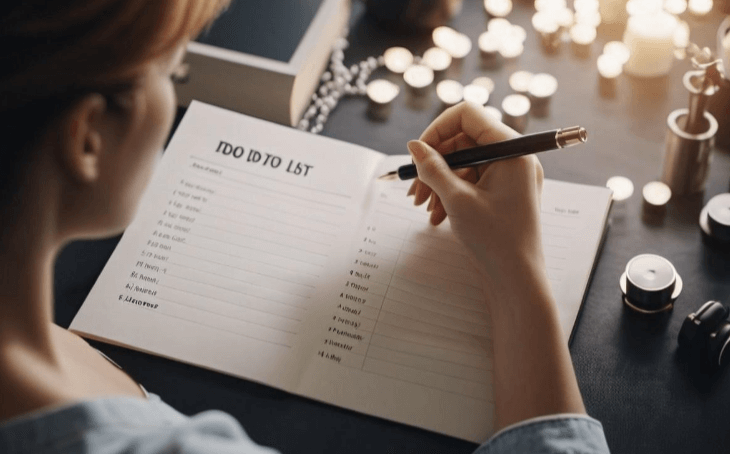How to Plan Things and Accomplish Goals When You’re Not Doing Well

Attention Deficit Hyperactivity Disorder (ADHD) is a neurodivergence that makes everyday tasks particularly challenging. People with ADHD may struggle with procrastination, planning, and completing tasks. Even while attending a meeting, they not only listen to the speaker but also bet on an upcoming match or scroll through Instagram. Cognitive-behavioral therapy has introduced a skill-training program aimed at helping individuals adapt to the demands of reality. Here’s how it works and how it can help everyone be more productive without exhausting their mental resources.
What Is Skill Training?
The skill training program for ADHD individuals is a protocol designed for therapists, and it’s based on cognitive-behavioral therapy principles. This standardized protocol equips therapists with skills beneficial to ADHD clients: goal-setting, planning, task prioritization, managing procrastination, envisioning a future self, dealing with hyperfocus, reward systems, and organizing rest. The therapists can then transfer these skills to those in need.
While the training is designed with ADHD in mind, many people without neurodivergence face similar challenges with attention and task organization. The structure provided by this training can be helpful to anyone, especially those who find freedom and chaos appealing but difficult to manage.
Why Self-Organization Often Fails
One common piece of advice for ADHD individuals drowning in tasks is to “simply” get a planner and start recording things. But it’s not that simple. ADHD brains struggle with goal-setting and long-term project work, leading to abandoned planners and a cycle of frustration. This recurring failure leads to irritation, fatigue, and a deepening sense of inadequacy.
However, the concept of using a planner does work. It’s one of the fundamental skills in ADHD management. The challenge lies in the fact that many ADHD individuals can’t maintain a planner or use it effectively. This is where skill training comes in to teach how to properly use a planner, set goals, and plan life.
What definitely doesn’t work is motivational literature. It may address 2% of the problem because ADHD individuals don’t usually lack motivation. On the contrary, they often have too many plans or set overly ambitious goals. When these plans fall through, they end up in a vicious cycle of self-criticism, procrastination, and failure to reach goals.
To break this cycle, skill training is essential for learning how to plan and achieve goals.
The First Line of Treatment
The first-line treatment for ADHD is pharmacological. However, for those who cannot or don’t wish to use medication, psychotherapy serves as an effective second-line or first-line treatment. For some, therapy successfully replaces medications, which can cause side effects like sleep disturbances.
What Hinders Skill Development?
Modern life is designed to distract, even for those without attention disorders. Electronic devices and constant notifications are prime culprits, as are background noise from music, TV, or radio, which might seem helpful but often worsens focus.
For ADHD individuals, just realizing their brain functions differently can be a barrier. Many spend years comparing themselves to neurotypical people, wondering why they can’t manage basic tasks. Accepting their diagnosis and recognizing their unique needs is the first step toward seeking help.
Skill One: Planning and Prioritizing
Many ADHD individuals live without a clear plan, focusing on the present. This often stems from an inability to envision a “future self,” or making such an image too abstract, like “I want to be an actor someday.” Without concrete goals, it’s hard to motivate action.
In therapy, dreams are translated into tangible goals. For instance, rather than dreaming of acting, one could enroll in a local acting class. While it may not seem like the ultimate goal, it brings them closer to it.
From goals come plans and tasks, which need prioritization. A common technique is the ABC system: identify tasks for the day, label the most important ones as “A,” then “B” and “C” for secondary and tertiary tasks, ensuring “A” is always done first.
This technique helps ADHD individuals follow through on their plans and experience the dopamine reward. Many studies show that ADHD individuals have lower dopamine levels, and breaking their own plans worsens the situation, leading to feelings of failure. That’s why it’s crucial to set realistic goals and limit the number of tasks.
Skill Two: Overcoming Choice Paralysis
Choice paralysis is common in ADHD. Faced with multiple plans or tasks, individuals can freeze, wasting hours in indecision. The root cause is often a lack of task prioritization and an overwhelming number of unstructured goals.
To counter this, individuals need a pre-set schedule. Even if it only includes three tasks, they should be assigned specific times with breaks in between. This is what Polyakova calls the “usability logic” of the day, ensuring tasks are completed when planned.
Skill Three: Beating Procrastination
Procrastination often occurs when ADHD individuals either don’t believe they can achieve a goal or aren’t prepared to put in the necessary effort. While the desired outcome is enticing, they may struggle with understanding that significant effort is required, often expecting things to happen faster than is realistically possible.
To tackle procrastination, ADHD individuals need to break down tasks, prioritize, and plan. A short-term solution is “body doubling,” where someone else’s presence helps them stay on task. Deadlines, though stressful, can also serve as a motivator.
Skill Four: Organizing the Environment
Maintaining a clutter-free environment is a struggle for many with ADHD, especially women who face societal pressure to be neat. ADHD individuals often find the process of cleaning itself distracting. Yet a comfortable, minimal environment is essential for focus.
The key is minimizing visual noise. Simple actions like moving the phone to another room help reduce distractions.
Skill Five: Planning Rest
Rest is a challenge for ADHD individuals, and it needs to be scheduled. Polyakova recommends designating specific days for rest, avoiding overly flexible schedules. While activities like traveling and hobbies provide emotional stimulation, true rest for the body and mind often involves lying down and doing nothing.
In a culture that stigmatizes passive rest, it’s important to challenge internal beliefs about productivity and embrace the necessity of doing nothing at times. By mastering these skills, ADHD individuals — and even those without ADHD — can achieve better focus, balance, and productivity in their daily lives.






